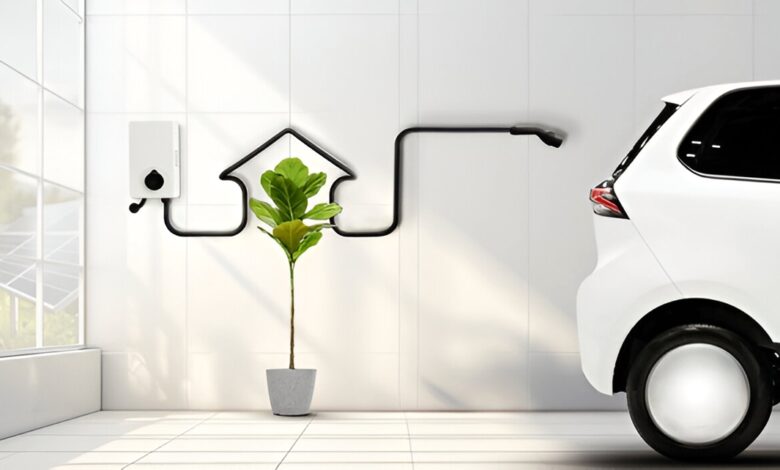
In today’s world, where energy costs are rising and environmental concerns are growing, making your home more energy-efficient is not just a trend—it’s a necessity. Fortunately, advancements in smart technology have made it easier than ever to reduce energy consumption, lower utility bills, and minimize your carbon footprint. By integrating smart tech into your home, you can achieve greater control over your energy usage while enjoying enhanced comfort and convenience. In this article, we’ll explore practical ways to make your home more energy-efficient using smart technology, breaking down each step in detail.
1. Install Smart Thermostats for Optimal Heating and Cooling
One of the most effective ways to make your home more energy-efficient is by installing a smart thermostat. Traditional thermostats require manual adjustments, which can lead to energy waste if you forget to lower the heat or turn off the AC. Smart thermostats, on the other hand, learn your habits and automatically adjust the temperature based on your schedule.
How Smart Thermostats Work
Smart thermostats like Nest, Ecobee, or Honeywell use sensors and Wi-Fi connectivity to monitor your home’s temperature. They can detect when you’re away and adjust the heating or cooling accordingly, ensuring you’re not wasting energy on an empty house. Many models also provide energy usage reports, helping you identify patterns and make informed decisions.
Benefits of Smart Thermostats
- Energy Savings: By optimizing heating and cooling, smart thermostats can reduce energy consumption by up to 20%.
- Remote Control: Adjust your home’s temperature from anywhere using a smartphone app.
- Integration: Pair your smart thermostat with other devices like smart speakers for voice control.
2. Upgrade to Smart Lighting Systems
Lighting accounts for a significant portion of a home’s energy use. Switching to smart lighting systems is a simple yet impactful way to make your home more energy-efficient.
What Are Smart Lighting Systems?
Smart lighting includes LED bulbs and fixtures that can be controlled remotely via an app or voice commands. Brands like Philips Hue, LIFX, and Sengled offer bulbs that can change color, dim, and turn on or off automatically.
How Smart Lighting Saves Energy
- Automation: Set schedules for lights to turn off when not in use or adjust brightness based on natural light.
- Motion Sensors: Install smart lights with motion sensors to ensure lights are only on when needed.
- Energy-Efficient LEDs: Smart bulbs are typically LED, which use up to 75% less energy than incandescent bulbs.
Additional Benefits
- Customization: Create lighting scenes for different moods or activities.
- Integration: Sync with other smart devices for a seamless smart home experience.
3. Use Smart Plugs to Control Energy-Hungry Devices
Even when turned off, many electronics continue to draw power in standby mode—a phenomenon known as “phantom energy.” Smart plugs can help you tackle this issue and make your home more energy-efficient.
What Are Smart Plugs?
Smart plugs are devices that fit into traditional outlets, allowing you to control connected appliances remotely. They can be managed via an app or voice assistant, making it easy to turn devices on or off as needed.
How Smart Plugs Reduce Energy Waste
- Scheduling: Set timers to turn off devices like TVs, chargers, or coffee makers when not in use.
- Energy Monitoring: Some smart plugs track energy consumption, helping you identify which devices are using the most power.
- Remote Access: Turn off forgotten appliances from anywhere, preventing unnecessary energy use.
Popular Smart Plug Options
- TP-Link Kasa: affordable and easy to use.
- Wemo Mini: compact design with energy monitoring features.
- Amazon Smart Plug: integrates seamlessly with Alexa.
4. Invest in Smart Appliances for Long-Term Savings
Modern smart appliances are designed to be energy-efficient, making them a worthwhile investment for homeowners looking to make their home more energy-efficient.
Examples of Smart Appliances
- Smart Refrigerators: Adjust cooling based on usage patterns and alert you if the door is left open.
- Smart Washing Machines: Optimize water and detergent usage for each load.
- Smart Dishwashers: Run during off-peak hours to save on energy costs.
Benefits of Smart Appliances
- Energy Efficiency: Many smart appliances are ENERGY STAR certified, meaning they meet strict energy efficiency guidelines.
- Remote Monitoring: Receive alerts if an appliance is left on or needs maintenance.
- Cost Savings: While the upfront cost may be higher, the long-term energy savings can offset the initial investment.
5. Install Smart Blinds and Shades
Windows are a major source of heat gain in the summer and heat loss in the winter. Smart blinds and shades can help regulate indoor temperatures, reducing the need for heating and cooling.
How Smart Blinds Work
Smart blinds, such as those from Lutron or IKEA, can be programmed to open and close at specific times. They can also respond to sunlight, closing during the hottest part of the day to keep your home cool.
Benefits of Smart Blinds
- Energy Savings: Reduce the load on your HVAC system by blocking or allowing sunlight as needed.
- Convenience: Control blinds remotely or set automated schedules.
- Privacy: Adjust blinds with a tap on your smartphone.
6. Monitor Energy Usage with Smart Home Energy Monitors
To truly make your home more energy-efficient, you need to understand where your energy is going. Smart home energy monitors provide real-time insights into your energy consumption.
What Are Smart Home Energy Monitors?
Devices like Sense or Emporia Vue connect to your electrical panel and track the energy usage of individual appliances. They provide detailed reports and recommendations for reducing consumption.
Benefits of Energy Monitors
- Visibility: See which devices are using the most energy.
- Cost Tracking: Monitor your energy costs in real time.
- Actionable Insights: Receive tips for optimizing energy use.
7. Integrate Solar Panels with Smart Inverters
For homeowners looking to take energy efficiency to the next level, solar panels paired with smart inverters are an excellent option.
How Smart Inverters Work
Smart inverters convert the DC electricity generated by solar panels into AC electricity for your home. They also allow you to monitor energy production and usage through an app.
Benefits of Solar Panels and Smart Inverters
- Renewable Energy: Reduce reliance on grid electricity.
- Energy Independence: Store excess energy in batteries for use during outages.
- Cost Savings: Lower your electricity bills and potentially earn credits through net metering.
8. Seal and Insulate Your Home with Smart Sensors
Even the most advanced smart technology won’t be effective if your home isn’t properly sealed and insulated. Smart sensors can help you identify areas where energy is being wasted.
Types of Smart Sensors
- Temperature Sensors: Detect drafts or uneven heating/cooling.
- Humidity Sensors: Prevent mold and improve indoor air quality.
- Window and Door Sensors: Alert you if windows or doors are left open.
Benefits of Smart Sensors
- Improved Comfort: Maintain consistent temperatures throughout your home.
- Energy Savings: Reduce the workload on your HVAC system.
- Preventative Maintenance: Address issues before they become costly problems.
9. Leverage Smart Home Hubs for Centralized Control
A smart home hub acts as the brain of your smart home, allowing you to control all your devices from one place. This centralized control makes it easier to make your home more energy-efficient.
Popular Smart Home Hubs
- Amazon Echo: Works with Alexa-enabled devices.
- Google Nest Hub: integrates with Google Assistant.
- Samsung SmartThings: compatible with a wide range of devices.
Benefits of Smart Home Hubs
- Simplified Management: Control all your smart devices through a single app.
- Automation: Create routines that optimize energy usage, such as turning off all lights and lowering the thermostat at bedtime.
- Scalability: Easily add new devices as your smart home grows.
10. Educate Yourself and Stay Updated on Smart Tech Trends
The world of smart technology is constantly evolving. Staying informed about the latest advancements can help you continue to make your home more energy-efficient.
How to Stay Updated
- Follow Tech Blogs: Websites like CNET, TechCrunch, and Wired regularly cover smart home innovations.
- Join Online Communities: Forums like Reddit’s r/smarthome offer tips and advice from other users.
- Attend Trade Shows: Events like CES showcase cutting-edge smart home technologies.
Conclusion
Making your home more energy-efficient with smart tech is a smart investment for both your wallet and the planet. From smart thermostats and lighting to energy monitors and solar panels, there are countless ways to reduce energy consumption and enhance your home’s efficiency. By integrating these technologies and staying informed about new developments, you can create a comfortable, sustainable living space that benefits you and the environment. Start small, experiment with different devices, and watch as your energy bills shrink and your home becomes smarter and greener.











